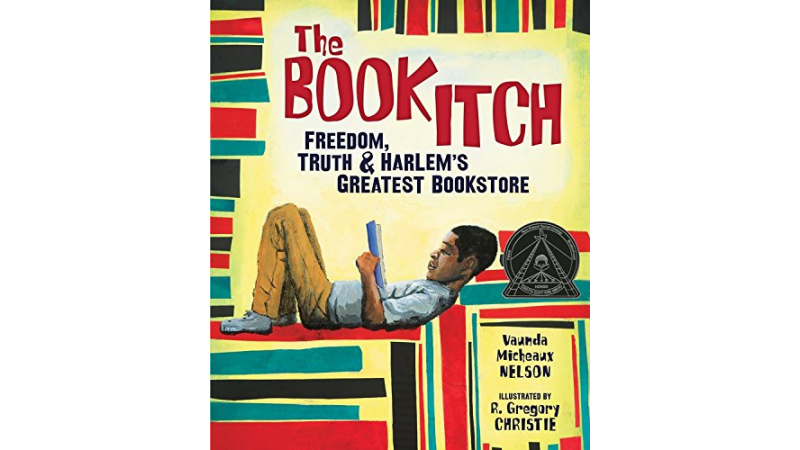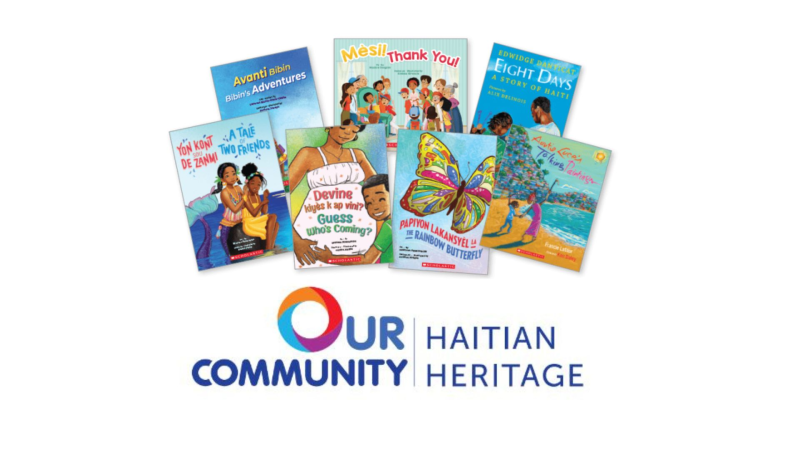This year marks the 50th birthday of Kwanzaa, founded in 1966 by Dr. Maulana Karenga.
Celebrated by both African Americans and African peoples globally, Kwanzaa is a cultural holiday that takes place over the seven days between December 26th and January 1st and it celebrates family, community, and culture. The most familiar elements of Kwanzaa may be the kinara, which holds seven candles, and the Nguzo Saba (seven principles) that the candles represent. However, there are several more components needed for a Kwanzaa celebration – one of which is culturally relevant books, traditionally given as gifts from adults to children.
According to the official Kwanzaa website, to set up for the celebration a table is covered with African cloth and then the mkeka (mat). The kinara is placed on top of the mkeka, as well as the mazao (crops), at least two ears of corn, and the kikombe cha umoja (the Unity cup). Art and books “on the life and culture of African people” are then placed on or next to the mkeka. So, for each of the seven principles, I tried my best to select a book that exemplifies its meaning. Below are the Nguzo Saba, their definitions, and an explanation for how each title aligns.
 Umoja (Unity): To strive for and to maintain unity in the family, community, nation, and race.
Umoja (Unity): To strive for and to maintain unity in the family, community, nation, and race.
Kinda Like Brothers, by Coe Booth: This middle school story touches on all of the elements of Umoja. Family is addressed via the main character Jarrett, his mom, her boyfriend Terrence, and the foster children she opens their home to. Jarrett and his friends spend most of their summer at the community center, where an incident leads to a discussion in the men’s group, led by Terrance, about how they should carry themselves in interactions with the police.
Kujichagulia (Self-Determination): To define and name ourselves, as well as to create and speak for ourselves.
Life in Motion: An Unlikely Ballerina, by Misty Copeland: An autobiography is an ideal choice for exploring Kujichagulia and, one year after telling her own story, Misty Copeland was named a the first African American female principal dancer of the American Ballet Theater. Voicing her experience of determination and perseverance, and including her views on ballet and her desire to rise to the top, seamlessly aligns with self-determination.
Ujima (Collective Work and Responsibility): To build and maintain our community together and make our brothers' and sisters' problems our problems and to solve them together.
We Beat the Street, by Sharon M. Draper, Sampson Davis, Rameck Hunt, & George Jenkins: This adaptation of The Pact, for young readers, gives the true story of how three teenagers from the projects of Newark, NJ made a pact to become doctors – and succeeded! Helping each other past obstacles like drugs and crime, together these friends finished college and medical school and went on to practice in the community where they grew up.

Ujamaa (Cooperative Economics): To build and maintain our own stores, shops, and other businesses and to profit from them together.
The Book Itch: Freedom, Truth, and Harlem's Greatest Bookstore, by Vaunda Micheaux Nelson & R. Gregory Christie: This nonfiction picture book is about the National Memorial African Bookstore, founded in 1939 by Lewis Michaux. Told from the perspective of his young son, patrons such as Muhammad Ali and Malcolm X set the tone for a business where the shared profit was knowledge, education and political awareness.
Nia (Purpose): To make our collective vocation the building and developing of our community in order to restore our people to their traditional greatness.
Shadowshaper, by Daniel José Older: Set in modern-day Brooklyn, this tale takes on tradition, gender roles, hair, skin color, gentrification and cultural appropriation – to name a few things that I love about it – and the novel weaves those elements into an action adventure story featuring a strong female protagonist and magical realism. To quote Publishers Weekly, “What makes Older’s story exceptional is the way Sierra belongs in her world, grounded in family, friends, and an awareness of both history and change.”
Kuumba (Creativity): To do always as much as we can, in the way we can, in order to leave our community more beautiful and beneficial than we inherited it.
Last Stop on Market Street, by Matt de la Peña & Christian Robinson: Winner of several awards, this picture book fits many of the Kwanzaa principles. The conversation between CJ and his Nana, however, aligns particularly well with Kuumba; Nana has a creative answer for every question and every complaint from CJ, and she shows him the beauty of their community, neighbors, and fellow bus riders. When they finally reach the last stop on Market Street, their Sunday post-church outing takes on even more meaning and relevance.
 Imani (Faith): To believe with all our hearts in our people, our parents, our teachers, our leaders, and the righteousness and victory of our struggle.
Imani (Faith): To believe with all our hearts in our people, our parents, our teachers, our leaders, and the righteousness and victory of our struggle.
Nelson Mandela "No Easy Walk to Freedom", by Barry Denenberg: Mandela’s life embodies all of the elements of Imani. Spiritual and educated, Mandela had faith in humanity and saw the South African struggle through to victory.
Many of these books are ones that I already love, for various reasons. Looking at them together and recognizing how they embody unity, self-determination, collective work and responsibility, cooperative economics, purpose, creativity and faith is heart-warming – and a testament to the talent and hard work of their creators!
What books can you think of that represent the Nguzo Saba?






